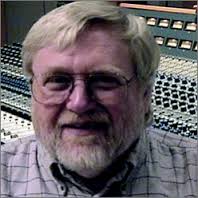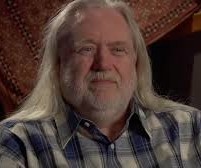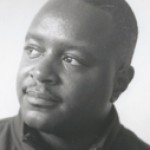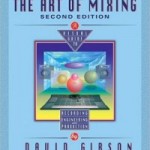Bob Olhsson Mastering Engineer
Bob Olhsson is a renowned mastering engineer who has literally had his hand on the pulse of music history. The history of Bob Olhsson involves him mastering iconic Motown artists songs and many others. Imagine being able to put the finishing touches on Motown classics that are still revered, getting airplay and being streamed around the world 50 years later. I first found out about Bob Olhsson the mastering engineer through reading a popular book named: “The Audio Mastering Handbook” By Bobby Owsinski. He was featured and interviewed in the book. Bob engineered the initial solo projects by Stevie Wonder and Marvin Gaye’s “What’s Going On” album. I myself had the opportunity to interview Bob Olhsson and was surprised to see that he combined an in-depth music history to many of his answers. Bob has a great insight as to what some of the problems and solutions are for our current version of the music industry. Bob Olhsson also breaks down the genius of Stevie Wonder in a very unique way. This interview is also filled with information about the history of American music, it’s surprising roots, and the best business practices of the past. You cannot buy first-hand information and wisdom. It is a very rare and valuable commodity that can give us answers to many scenarios we are presented with. Enjoy this interview and share the article.
JH: When did you start doing audio and mastering at Motown?
Bob Olhsson: I started at Motown in 1965 as mastering trainee. I worked for 9 or 10 months. I was trying to go to Wayne State at the same time. It just wasn’t working. I dropped out of it and moved to Michigan State and did 2 terms there. I found a job in Boston for 3 months at a studio. Motown called me back and I came back to Detroit. I returned to mastering in 1968.
JH: What attracted you to audio and sound design as opposed to being a musician?
Bob Olhsson: My 6th grade class wrote and performed a radio program as a project. I saw that radio station control room and my desire to become a railroad engineer went right out the window. So beginning in the 6th grade that is what I wanted to do. I went to the library and got all of the books on the subject I could find. When I got in the 8th grade the school I was in had a radio drama program. I was in radio drama from 8th grade until high school graduation. It was incredible because the junior high teacher and the senior high teacher were both former producers at NBC. They were both women and both got fired before World War II along with all of the other women in broadcasting. The government had trained a lot of servicemen to do that work and the employers got a big tax break if they hired veterans. Women got canned even though, most of what we consider broadcasting, things like sportscasts, newscasts, situation comedy, and all of that stuff was actually invented by a woman in Chicago named Judith Waller. Before the War there were lots of women in broadcasting. There was a change and it became almost all men, and now it is still almost all men. I was lucky. I learned the basics of microphones and everything from these women.
JH: How did you learn mastering? Was there a mastering school?
Bob Olhsson: No. There were no schools. I learned from an engineer named Bob Dennis at Motown. He learned from a combination of books and training. Motown had been sending the mastering out to Bell Sound in New York. They did a lot of work for a lot of different labels. Berry Gordy had figured out that RCA could put 20,000 records out on the street, literally over a weekend. The only way they could have that agility is they would have to cut the record. But he wasn’t happy with what they were doing. So the idea was for us to basically create a prototype that they would match. Bob Dennis had figured out how to cut along with the chief engineer. They were coached by the people at RCA in Chicago.
JH: How long did it take you to be consistent in what you were taught, in terms of turning out a quality master?
Bob Olhsson: I would say in about 6 months. Everybody was supervised. There was nobody just hanging out on their own. You heard about it if there were any problems. At Motown, since they were going to be sending the tape out to Chicago. They wanted to be as close to a flat cut as it could be. A flat cut is a tape to disc transfer with no changes. At the level we wanted. So if we found something we could improve at mastering, most times it would be sent back for another mix.
JH: What was it like being it that kind of atmosphere at Motown, mastering the songs, seeing them go on the radio and become hits?
Bob Olhsson: That was a shock. (laughs) When I got in there around the fall of 1965. The top ten on the charts were half the Beatles and half Motown. The irony was that I hardly knew anything about Motown. I am eternally grateful that Berry Gordy wanted a very integrated company. They were very intolerant of racism on any side. It was really an amazing atmosphere. The unfortunate part was that after I left, I discovered the rest of the world was not that way. I usually did not bring up Motown in the past, because it was such a team effort, that you couldn’t really take that much credit in your own mind. In retrospect, I learned an incredible amount from Berry Gordy. Berry Gordy may be the smartest person to ever go in the record business.
JH: I noticed on your site you spoke very well of Berry Gordy. Could you elaborate on that thought?
Bob Olhsson: The way they decided what would be released. It was what ever we had at the moment. First he had a policy that we would release 2 out of every 5 songs as singles. He was automatically going to try to cut 3 of the 5 out. The test was that it had to sequence with the top 5 in Billboard. You had to be able to play it next to that top 5. It had to stand up to those songs. It was harder to get a record released on Motown than it was to get a record deal. The reason he had the high standards, I learned later on that his first attempt at business was a record store. It was a jazz record store. One of things he learned at the record store, was that record stores all lost money 11 months a year and then hopefully made it back at Christmas. So that meant that the only bills they would pay is to the people they needed another record from. It was critical that a small label consistently had, hit after hit after hit. This is because you weren’t going to get paid for the last one until you had another one. Berry understood this. A lot of the other smaller labels did not really understand that. That is why there was a go for broke on the hits mentality. Motown was more of an artist management company than a label. There was no attempt to really make a profit on the records. It was a go for the throat, cost no object, get a hit. Assume that the artists success, doing live shows would cover the costs.
JH: I was looking at one of your interviews and there was something you said about Stevie Wonder in one of your answers. You considered him a musicologist and that he had been studying the history of the music that has been released since the early 1900’s. You also said that he had been incorporating those sounds into his self produced compositions over the years…
Bob Olhsson: Not even the sounds. Anything that he even heard, he can mime, he can imitate. He has an incredible skill for that. When he was making a record, he was casting it with people. Then imitating what those people would do. It was much more sophisticated than saying what is a good part for this. Plus he had experience working with the whole ensemble. So he understood the importance of ensembles and how that worked. He did not use click tracks. He would start out with a clavinet or something, and then play drums to it and then go from there. The actual time is an imaginary thing that you feel. The groove is about tension against that. He seemed to have an amazing understanding of that. It took me years to begin to have a clue as to what was going on. As I’ve learned more, I appreciate him more.
JH: Why is the music from the Motown era or music that came out at that time have a sound that is a bit more heartfelt, and soulful compared to the music that is coming out today with infinite technology at the disposal of the producers? Some of the music today you cannot even feel it.
Bob Olhsson: We are drowning in technology. You have to start with an ensemble. Unless you are Stevie Wonder, nobody can stack a bunch of overdubs and really get the feel. I have yet to hear it done. All things being equal, a live band will virtually always be better. The overall feeling is there. People get carried away with vocals and don’t understand that vocal tuning screws up vocal phrasing. You try to sing along with a lot of todays vocals and it just chews up your lungs. That is because it has been so altered. Intellectually you can say this is more in tune. The sing along is the test. That is what they did at Motown. It had to pass a sing along test, and a dance along test. That is how a mix got approved. It was about feel. It was about how it affected your body. Again Berry Gordy. Vocal tuning will kill the feeling and kill the chill up the spine effect. In the real world intonation is about aligning overtones and stretching against them. Tension and release. It is the same with rhythm. It is tension and release against an imaginary mantra like time. You don’t play on the time. You play against the time. Everybody is playing against the same time. A real good groove, you can’t possibly hook up to a grid. The beginning of a sample is not the beginning of a note. So you try and do that mechanically and it isn’t really right. It’s about where the attacks of the notes hit.
JH: Do you think this lack of feeling is the cause for poor record sales? I think file sharing became popular because albums were no longer good. Only a few tracks on the album were great songs.
Bob Olhsson: That is exactly my feeling. The biggest marketing mistake ever made was the CD. They killed the packaging. One side of an LP was 15 to 20 minutes. That’s as much as most people want to listen to. Very few albums would you flip over and listen to the 2nd side. Yet these guys bring out these CD’s. They are essentially double albums. It order to market them, you put all the best stuff in the beginning.
JH: Some of the greatest selling albums only had about 10 songs…
Bob Olhsson: The biggest Beach Boys records had 12 minute album sides. The songs were under 2 minutes. They are timeless. You listen to it once and you want to hear it over again. Part of it is that no 2 moments of those songs are the same. The song was simple and easy to learn. That is why you need simplicity. To make it easy for people to sing along with it. You’ve also got to have enough substance that it does not become boring after hearing it twice. You have got to have enough variation in it, so that you are noticing different things every time you hear it. The old method of production kind of let that happen. Now today it is like they are making cartoons.
JH: Interesting…
Bob Olhsson: Another thing that is real interesting that I learned at the Country Music Hall Of Fame of all places. Virtually all of the music teachers in the South Eastern US were descendants from slave musicians. There was a school for slaves in New Orleans that functioned right up until the Civil War. It was like a melting pot. In New Orleans you had all of these different cultures. You had motivation to learn because you would be working in the fields. Slaves were sent there to learn the pop music that the owners wanted to hear. But in the process they also got exposed to French, West African, Arabic and all kinds of other stuff. You had this real melting pot of the worlds music. This is what was brought back and the Emancipation helped a lot, and they set themselves up as music teachers. The poor had access to a comprehensive music education. It was almost the only place in the world where that was the case. All of our American music grew out of that.
JH: Do you think it would benefit a lot of young people coming up today to start studying the music all the way from the 1900’s. Since there is an iTunes and You Tube.
Bob Olhsson: It would take some time. I think it is critical that Black kids understand that they own all of American Music. There is nothing in Rock & Roll, or Broadway, or any of the rest that doesn’t trace back to many peoples ancestors.
JH: Have you ever heard software for mastering, that could compete sonically with the high quality hardware that is used?
Bob Olhsson: Yes, of course. The hardware is more idiot proof. The key to mastering is the monitoring system. You need the monitoring system, and you need to know that anything with a tenth to a db louder you are going to hear it sounding better.
JH: Do you think people will be able to master from their homes, with some training? I know that the speakers for mastering are much more expensive…
Bob Olhsson: Those speakers are much more revealing too. You don’t really want to use them for recording. You don’t want something that is going to send you into left field. You also don’t want to use something that is going have people getting over microscopic in what they are doing. What you need is a performance. Ideally you want it to be a different person. It is really about trying to optimize the first impression. Having worked on it for recording, you are not going to have a first impression.
JH: Did you find that mastering for Country Music was different when you got out to Nashville?
Bob Olhsson: I have done very little Country Music. But Country cracks me up because it is exactly the same as R&B. It is singing oriented. Finding out that they were both rooted in the same thing was a real revelation. One of the first Country stars was Jimmy Rogers. He was a break man on a rail road. It turns out that the railroad he was a break man on, he must have been one of 2 Whites out of 100 Black break man that were on that rail road. For sure all of his music teachers were all Black. Everybody’s music teacher was Black at the time. With Bill Monroe it was the same story. If you had money you were sent to Philadelphia or Paris. If you didn’t have money and you wanted to take music you went to the Black guy around the corner. That was all over the South Eastern US.
JH: It is amazing that I have never heard of this in my entire life. I have never heard of this origin of the music teachers. This has never been put on any television documentary.
Bob Olhsson: It blew my mind. I was in my late 50’s and I never knew that. Another thing that blew my mind was finding out who originated Swing (Jazz Swing) and Rock and Roll. A drummer named Chick Webb (a black drummer and bandleader from New York) and his singer was Ella Fitzgerald. She was his female singer. His male singer was Louis Jordan who also played sax. They literally invented Swing. Before that dance music some really square Guy Lombardo Stuff. Jazz had been a kind of a march. The whole thing of Swing and a Groove was Chick Webb. There was a Song that Ella Fitzgerald sang: “A Tisket, A Tasket”. She was as big as Elvis Presley, or The Beatles, or Sinatra or any of them ever were in the 30’s. This gets buried because everybody wants to take credit. In the 40’s you have Louie Jordan. He was at the top of the charts in 1945 with a song called “Caldonia”. Little Ricard, Chuck Berry, all of those guys are a knock off of Louis Jordan. There are your roots of Rock & Roll right there. It was Louis Jordan and the Timpani 5. Even James Brown said his biggest influence was Louis Jordan. But everybody wants to take credit.
JH: Maybe that is the purpose of this interview. To bring some of these things to the surface!
Bob Olhsson: What is amazing is that I posted something on the internet. I got this email from Cab Calloway’s grandson. He told me his grandfathers greatest frustration was that nobody would credit Chick Webb with the invention of Swing. Isn’t that amazing? Another twist is that the person who got credit for popularizing swing was Benny Goodman. When Benny Goodman first hit, it was in Oakland California. Oakland California was headquarters for the Pullman Porters. So he basically had a Black audience that got into it. At Motown our records broke in Oakland more so that in Detroit. Oakland had very similar demographic to New York City. If something was a hit in Oakland, New York stations would add that song. Oakland is a big deal. It had the first black middle class really, beginning in the 1880’s and 1890’s. It preceded Jim Crow.
JH: What do think the future of mastering is? Where is it going technology wise?
Bob Olhsson: I don’t think it is going to change that much. It is mostly a matter of being independent and monitoring. It is about being objective and monitoring quality. I don’t see it changing that much. The main change that has happened is that the monitors people work on are a lot better than they used to be. There is a lot of less saving things with EQ, and a lot more of fixing glitches. It is more of a detail surgery type of stuff. What you are really trying to do is get rid of distractions from the field. If I was the person who mixed this for the first time in this room. What would I change? That is the mindset that I go for. There a million ways to mix something. There are million different tonal approaches. My job is not to interfere with that. It is not to come up with a new creative concept for it. Just fix anything that is obviously unintended, that could distract. The other thing is we are really mastering for the reviewers, program directors, and the people who could advance the artists career. They are listening on quality systems. You can’t assume they aren’t.
JH: What advice would give to any one who would like to get into mastering?
Bob Olhsson: Ultimately you want to intern with somebody. What you get from schools is the relationships with other students. That can lead to things. Getting a job is about who knows what you know. If you’re assisting someone who is busy and you’re meeting lots of people, that where lots of successful people come from. It is an oral tradition. You hear something, and it is how you respond to it. You learn how to respond to it by standing besides someone else. You see how they respond to it and what is important to them. You can kind of try to emulate what they would do, after you have had a few of those experiences. All I know is the apprenticeship system. I stand on the shoulders of the people I learned from. I am not sure how you could be self taught. I tried teaching with very mixed results. A tiny number of people got it. Most were just looking for some formula. The secret if there is any, is there isn’t any formula.
Category: Entertainment News, Tech Talk















